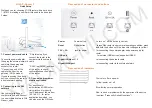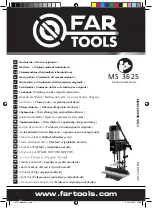
G
LOSSARY
802.11b
The IEEE specification for wireless Ethernet which allows speeds of up to
11 Mbps. The standard provides for 1, 2, 5.5 and 11 Mbps data rates.
The rates will switch automatically depending on range and environment.
802.11g
The IEEE specification for wireless Ethernet which allows speeds of up to
54 Mbps. The standard provides for 6, 12, 24, 36, 48 and 54 Mbps data
rates. The rates will switch automatically depending on range and
environment.
802.11n
The IEEE specification for wireless Ethernet which allows speeds of up to
248 Mbps. 802.11n is a proposed amendment which improves upon the
previous 802.11 standards by adding multiple-input multiple-output
(MIMO) and many other newer features.
10BASE-T
The IEEE specification for 10 Mbps Ethernet over Category 3, 4 or 5
twisted pair cable.
100BASE-TX
The IEEE specification for 100 Mbps Fast Ethernet over Category 5
twisted-pair cable.
Access Point
An access point is a device through which wireless clients connect to
other wireless clients and which acts as a bridge between wireless clients
and a wired network, such as Ethernet. Wireless clients can be moved
anywhere within the coverage area of the access point and still connect
with each other. If connected to an Ethernet network, the access point
monitors Ethernet traffic and forwards appropriate Ethernet messages to
the wireless network, while also monitoring wireless client radio traffic
and forwarding wireless client messages to the Ethernet LAN.
Summary of Contents for 3CRWDR300A-73
Page 8: ......
Page 12: ...10 ABOUT THIS GUIDE ...
Page 22: ...20 CHAPTER 1 INTRODUCING THE ROUTER ...
Page 34: ...32 CHAPTER 3 SETTING UP YOUR COMPUTERS ...
Page 146: ...144 CHAPTER 6 TROUBLESHOOTING ...
Page 161: ...159 ...
Page 166: ...164 APPENDIX E OBTAINING SUPPORT FOR YOUR 3COM PRODUCTS ...
Page 180: ...178 ...
















































